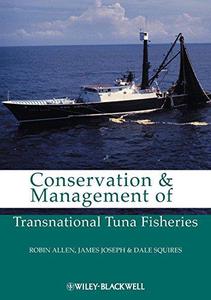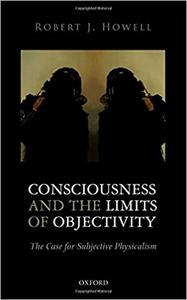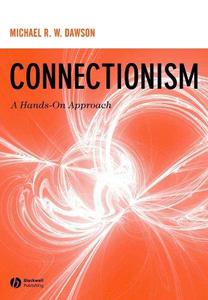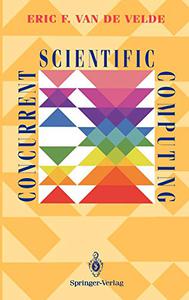

E-Books → Contemporary World Politics The circumstances and ideas of the present age
Published by: voska89 on 3-08-2022, 23:26 |  0
0

Contemporary World Politics: The circumstances and ideas of the present age by Emma William
English | 2022 | ISBN: N/A | ASIN: B0B3X3845M | 810 pages | EPUB | 1.30 Mb
Contemporary World Politics is designed to provide students who have a background in international relations theory and post-1945 world politics, or who have completed IR1, with an in-depth critical overview of key developments and issues in contemporary world politics.
E-Books → Construction Law An Introduction for Engineers, Architects, and Contractors
Published by: voska89 on 3-08-2022, 23:26 |  0
0

Construction Law: An Introduction for Engineers, Architects, and Contractors By Gail S. Kelley(auth.)
2012 | 294 Pages | ISBN: 1118229037 | PDF | 3 MB
For a construction business to function properly, architects, engineers, and contractors need to understand how the various state and federal laws affect their business and how to avoid disputes and exposure to liability. This book offers a comprehensive review of the US legal environment, both criminal and civil, focusing on the key legal concepts and issues applicable to a typical construction project. Construction professionals will find clear, concise introduction to a wide range of contractual issues related to project participants, as well as issues related to the actual construction and litigation.Content: Chapter 1 Law and Government (pages 1-13): Chapter 2 Basic Legal Principles (pages 15-28): Chapter 3 Project Participants (pages 29-37): Chapter 4 Project Delivery Systems (pages 39-49): Chapter 5 Construction Contracts (pages 51-66): Chapter 6 The Design Process (pages 67-76): Chapter 7 The Procurement Process (pages 77-86): Chapter 8 Pricing Construction Projects (pages 87-96): Chapter 9 Subcontractors and Suppliers (pages 97-112): Chapter 10 Time for Performance (pages 113-125): Chapter 11 Construction Scheduling (pages 127-137): Chapter 12 Contract Administration (pages 139-145): Chapter 13 The Payment Process (pages 147-157): Chapter 14 Changes to the Work (pages 159-169): Chapter 15 Differing Site Conditions (pages 171-180): Chapter 16 Termination of the Construction Contract (pages 181-186): Chapter 17 Mechanic's Liens (pages 187-196): Chapter 18 Construction Insurance (pages 197-203): Chapter 19 Surety Bonds (pages 205-210): Chapter 20 Liability for Defective Construction (pages 211-219): Chapter 21 Calculations of Damages (pages 221-238): Chapter 22 The Economic Loss Doctrine (pages 239-248): Chapter 23 Alternative Dispute Resolution (pages 249-260):
E-Books → Construction Claims & Responses Effective Writing & Presentation
Published by: voska89 on 3-08-2022, 23:26 |  0
0

Construction Claims & Responses: Effective Writing & Presentation By Andy Hewitt(auth.)
2011 | 9 Pages | ISBN: 0470654813 | PDF | 1 MB
Featuring a Foreword by Roger Knowles FRICS, FCIArb, FQSi, Barrister The book discusses the different types of claim common to construction contracts and presents a step-by-step guide which demonstrates the process of building up the submission of a claim. It includes guidelines as to how to set out the claim, section by section in a logical manner to ensure that the essentials of a successful claim are included. Worked examples of claims for variations, extensions of time and additional payment are included together with sample wording showing precisely how the claim may be presented in a manner which will lead the reviewer to a logical conclusion - or at least contain a persuasive argument to support the claimant's case. The vast majority of claims are managed without the need to resort to case law or legal matters. Construction Claims: effective writing & responses therefore discusses what the claim is trying to achieve and how to do this in a logical and persuasive manner This is a practical, hands-on guide for the construction industry professional which explains how to approach the preparation of the claim document, what topics to cover, how to present the essential elements and how to compile the submission document into a user friendly and comprehensive document. For those whose job it is to review such submissions, it advises how to prepare responses which set out the respondent's counter arguments, points of view and determinations. The guide covers: The various types of claim. How the claim may be split into sections dealing with the details of the contract, the cause, the effect, entitlement and quantum. What this section is attempting to demonstrate or achieve and why. What should be included within the section and why. Worked examples of typical claims and responses with sample wording. Content: Chapter 1 Introduction (pages 1-9):
E-Books → Constructing the Criminal Tribe in Colonial India Acting Like a Thief
Published by: voska89 on 3-08-2022, 23:26 |  0
0

Constructing the Criminal Tribe in Colonial India: Acting Like a Thief By Henry Schwarz(auth.)
2010 | 171 Pages | ISBN: 1405120576 | PDF | 2 MB
Constructing the Criminal Tribe in Colonial India provides a detailed overview of the phenomenon of the "criminal tribe" in India from the early days of colonial rule to the present. Traces and analyzes historical debates in historiography, anthropology and criminology Argues that crime in the colonial context is used as much to control subject populations as to define morally repugnant behavior Explores how crime evolved as the foil of political legitimacy under military Examines the popular movement that has arisen to reverse the discrimination against the millions of people laboring under the stigma of criminal inheritance, producing a radical culture that contests stereotypes to reclaim their humanity Content: Chapter 1 Placing Criminals, Displacing Thuggee (pages 13-46): Chapter 2 How to Make a Thug (pages 47-80): Chapter 3 Discipline, Labor, Salvation (pages 81-111): Chapter 4 Acting Like a Thief (pages 112-138):
E-Books → Constraint Satisfaction Problems
Published by: voska89 on 3-08-2022, 23:26 |  0
0

Constraint Satisfaction Problems By
2013 | 232 Pages | ISBN: 184821460X | PDF | 3 MB
A Constraint Satisfaction Problem (CSP) consists of a set of variables, a domain of values for each variable and a set of constraints. The objective is to assign a value for each variable such that all constraints are satisfied. CSPs continue to receive increased attention because of both their high complexity and their omnipresence in academic, industrial and even real-life problems.This is why they are the subject of intense research in both artificial intelligence and operations research.This book introduces the classic CSP and details several extensions/improvements of both formalisms and techniques in order to tackle a large variety of problems. Consistency, flexible, dynamic, distributed and learning aspects are discussed and illustrated using simple examples such as the n-queen problem.Contents:1. Foundations of CSP.2. Consistency Reinforcement Techniques.3. CSP Solving Algorithms.4. Search Heuristics.5. Learning Techniques.6. Maximal Constraint Satisfaction Problems.7. Constraint Satisfaction and Optimization Problems.8. Distibuted Constraint Satisfaction Problems.Content: Chapter 1 Foundations of CSP (pages 1-28): Khaled Ghedira and Bernard DubuissonChapter 2 Consistency Reinforcement Techniques (pages 29-72): Khaled Ghedira and Bernard DubuissonChapter 3 CSP Solving Algorithms (pages 73-98): Khaled Ghedira and Bernard DubuissonChapter 4 Search Heuristics (pages 99-120): Khaled Ghedira and Bernard DubuissonChapter 5 Learning Techniques (pages 121-134): Khaled Ghedira and Bernard DubuissonChapter 6 Maximal Constraint Satisfaction Problems (pages 135-164): Khaled Ghedira and Bernard DubuissonChapter 7 Constraint Satisfaction and Optimization Problems (pages 165-180): Khaled Ghedira and Bernard DubuissonChapter 8 Distributed Constraint Satisfaction Problems (pages 181-220): Khaled Ghedira and Bernard Dubuisson
E-Books → Conservative Government Penal Policy 2015-2021 Austerity, Outsourcing and Punishment Redux
Published by: voska89 on 3-08-2022, 23:26 |  0
0

Conservative Government Penal Policy 2015-2021: Austerity, Outsourcing and Punishment Redux?
English | 2022 | ISBN: 3031007964 | 477 Pages | PDF (True) | 12 MB
This book interrogates Conservative government penal policy for adult and young adult offenders in England and Wales between 2015 and 2021. Government penal policy is shown to have been often ineffective and costly, and to have revived efforts to push the system towards a disastrous combination of austerity, outsourcing and punishment that has exacerbated the penal crisis.
E-Books → Conservation and Management of Transnational Tuna Fisheries
Published by: voska89 on 3-08-2022, 23:25 |  0
0

Conservation and Management of Transnational Tuna Fisheries By
2010 | 347 Pages | ISBN: 0813805678 | PDF | 6 MB
Conservation and Management of Transnational Tuna Fisheries reviews and synthesizes the existing literature, focusing on rights-based management and the creation of economic incentives to manage transnational tuna fisheries. Transnational tuna fisheries are among the most important fisheries in the world, and tuna commissions are increasingly shifting toward this approach. Comprehensively covering the subject, Conservation and Management of Transnational Tuna Fisheries summarizes global experience and offers practical applications for applying rights-based management and the creation of economic incentives, addressing potential problems as well as the total level of capacity. This reference work is divided into four parts, beginning with an overview of the book, including the issues, property rights, and rights-based management. The subsequent sections address issues arising with property rights, discuss bycatch, and cover compliance, enforcement, trade measures, and politics. Written by an expert team of international authors, Conservation and Management of Transnational Tuna Fisheries will appeal to social and fisheries scientists and fishery managers in universities and research institutions, government and non-governmental organizations, fisheries management bodies, members of the fishing industry, and international institutions.Content: Chapter 1 Introduction (pages 1-10): Dr. Robin Allen, Dr. James Joseph, Dr. Dale Squires and Elizabeth StryjewskiChapter 2 Addressing the Problem of Excess Fishing Capacity in Tuna Fisheries (pages 11-38): Dr. James Joseph, Dr. Dale Squires, Dr. William Bayliff and Professor Theodore GrovesChapter 3 Property and Use Rights in Fisheries (pages 39-64): Dr. Dale SquiresChapter 4 Rights?Based Management in Transnational Tuna Fisheries (pages 65-86): Dr. Robin Allen, Dr. William Bayliff, Dr. James Joseph and Dr. Dale SquiresChapter 5 The Benefits and Costs of Transformation of Open Access on the High Seas (pages 87-95): Dr. Robin Allen, Dr. William Bayliff, Dr. James Joseph and Dr. Dale SquiresChapter 6 International Fisheries Law and the Transferability of Quota: Principles and Precedents (pages 97-125): Professor Andrew SerdyChapter 7 Can Rights Put It Right? Industry Initiatives to Resolve Overcapacity Issues: Observations from a Boat Deck and a Manager's Desk (pages 127-135): Daryl R. SykesChapter 8 Rights?Based Management of Tuna Fisheries: Lessons from the Assignment of Property Rights on the Western US Frontier (pages 137-154): Professor Gary D. LibecapChapter 9 The Economics of Allocation in Tuna Regional Fisheries Management Organizations (pages 155-162): Professor R. Quentin Grafton, Professor Rognvaldur Hannesson, Bruce Shallard, Daryl R. Sykes and Dr. Joseph TerryChapter 10 Allocating Fish across Jurisdictions (pages 163-179): Professor Jon M. Van DykeChapter 11 Buybacks in Transnational Fisheries (pages 181-194): Dr. Dale Squires, Dr. James Joseph and Professor Theodore GrovesChapter 12 Limited Access in Transnational Tuna Fisheries (pages 195-211): Brian Hallman, Professor Scott Barrett, Raymond P. Clarke, Dr. James Joseph and Dr. Dale SquiresChapter 13 Individual Transferable Quotas for Bycatches: Lessons for the Tuna-Dolphin Issue (pages 213-224): Professor Rognvaldur HannessonChapter 14 Incentives to Address Bycatch Issues (pages 225-248): Dr. Heidi Gjertsen, Dr. Martin Hall and Dr. Dale SquiresChapter 15 Prospects for Use Rights in Tuna Regional Fisheries Management Organizations (pages 249-268): Professor Frank AlcockChapter 16 Flags of Convenience and Property Rights on the High Seas (pages 269-281): Professor Elizabeth R. DesombreChapter 17 Japanese Policies, Ocean Law, and the Tuna Fisheries: Sustainability Goals, the IUU Issue, and Overcapacity (pages 283-320): Dr. Kathryn J. Mengerink, Professor Harry N. Scheiber and Professor Yann?Huei SongChapter 18 Quasi?Property Rights and the Effectiveness of Atlantic Tuna Management 321 (pages 321-332): Professor D. G. Webster
E-Books → Consciousness and the Limits of Objectivity The Case for Subjective Physicalism
Published by: voska89 on 3-08-2022, 23:25 |  0
0

Robert J. Howell, "Consciousness and the Limits of Objectivity: The Case for Subjective Physicalism"
English | ISBN: 0199654662 | 2013 | 208 pages | PDF | 835 KB
In Consciousness and the Limits of Objectivity Robert J. Howell argues that the options in the debates about consciousness and the mind-body problem are more limited than many philosophers have appreciated. Unless one takes a hard-line stance, which either denies the data provided by consciousness or makes a leap of faith about future discoveries, one must admit that no objective picture of our world can be complete. Howell argues, however, that this is consistent with physicalism, contrary to received wisdom. After developing a novel, neo-Cartesian notion of the physical, followed by a careful consideration of the three major anti-materialist arguments-Black's 'Presentation Problem', Jackson's Knowledge Argument, and Chalmers' Conceivability Argument-Howell proposes a 'subjective physicalism' which gives the data of consciousness their due, while retaining the advantages of a monistic, physical ontology.
E-Books → Connectionism A Hands-On Approach
Published by: voska89 on 3-08-2022, 23:25 |  0
0

Connectionism: A Hands-On Approach By Michael R. W. Dawson(auth.)
2005 | 207 Pages | ISBN: 1405130741 | PDF | 3 MB
Connectionism is a "hands on" introduction to connectionist modeling through practical exercises in different types of connectionist architectures. explores three different types of connectionist architectures - distributed associative memory, perceptron, and multilayer perceptron provides a brief overview of each architecture, a detailed introduction on how to use a program to explore this network, and a series of practical exercises that are designed to highlight the advantages, and disadvantages, of each accompanied by a website at http://www.bcp.psych.ualberta.ca/~mike/Book3/ that includes practice exercises and software, as well as the files and blank exercise sheets required for performing the exercises designed to be used as a stand-alone volume or alongside Minds and Machines: Connectionism and Psychological Modeling (by Michael R.W. Dawson, Blackwell 2004) Content: Chapter 1 Hands?On Connectionism (pages 1-4): Chapter 2 The Distributed Associative Memory (pages 5-8): Chapter 3 The James Program (pages 9-21): Chapter 4 Introducing Hebb Learning (pages 22-29): Chapter 5 Limitations of Hebb Learning (pages 30-36): Chapter 6 Introducing the Delta Rule (pages 38-40): Chapter 7 Distributed Networks and Human Memory (pages 41-45): Chapter 8 Limitations of Delta Rule Learning (pages 46-47): Chapter 9 The Perceptron (pages 49-57): Chapter 10 The Rosenblatt Program (pages 58-71): Chapter 11 Perceptrons and Logic Gates (pages 72-80): Chapter 12 Performing More Logic with Perceptrons (pages 81-85): Chapter 13 Value Units and Linear Nonseparability (pages 87-90): Chapter 14 Network by Problem Type Interactions (pages 91-93): Chapter 15 Perceptrons and Generalization (pages 94-98): Chapter 16 Animal Learning Theory and Perceptrons (pages 99-107): Chapter 17 The Multilayer Perceptron (pages 108-113): Chapter 18 The Rumelhart Program (pages 114-128): Chapter 19 Beyond the Perceptron's Limits (pages 129-132): Chapter 20 Symmetry as a Second Case Study (pages 133-136): Chapter 21 How Many Hidden Units? (pages 137-144): Chapter 22 Scaling Up with the Parity Problem (pages 145-150): Chapter 23 Selectionism and Parity (pages 151-156): Chapter 24 Interpreting a Small Network (pages 157-162): Chapter 25 Interpreting Networks of Value Units (pages 163-173): Chapter 26 Interpreting Distributed Representations (pages 174-182): Chapter 27 Creating Your Own Training Sets (pages 183-187):
E-Books → Concurrent Scientific Computing
Published by: voska89 on 3-08-2022, 23:25 |  0
0

Concurrent Scientific Computing by Eric F. Velde
English | PDF | 1994 | 342 Pages | ISBN : 0387941959 | 25.2 MB
Mathematics is playing an ever more important role in the physical and biological sciences, provoking a blurring of boundaries between scientific dis ciplines and a resurgence of interest in the modern as well as the classical techniques of applied mathematics. This renewal of interest, both in research and teaching, has led to the establishment of the series: Texts in Applied Mathe matics (TAM). The development of new courses is a natural consequence of a high level of excitement on the research frontier as newer techniques, such as numerical and symbolic computer systems, dynamical systems, and chaos, mix with and reinforce the traditional methods of applied mathematics. Thus, the purpose of this textbook series is to meet the current and future needs of these advances and encourage the teaching of new courses.



